Sleeping Outside in All Weather
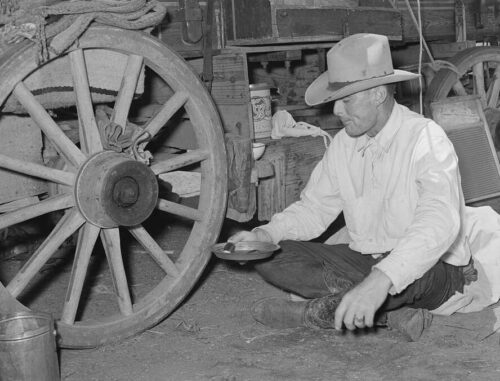
Cowboys spent long days driving cattle across vast open land, and at night, they didn’t always have the luxury of a warm bed. Instead, they slept under the stars, often without a tent or even a bedroll, braving the cold, rain, and even snow, Outside Magazine explains. In summer, the heat and bugs were relentless, and in winter, frostbite was a real danger. Today, even the most rugged outdoorsmen use high-tech camping gear to stay comfortable and safe.
Unlike modern workers who get weekends off, cowboys rarely had a break from the exhausting routine. A cowboy’s job demanded near-constant movement, and they had to be ready at a moment’s notice to deal with stampedes or injured cattle. Sleeping on uneven ground, often still wearing their boots, was just part of the deal. Nowadays, even military personnel have better sleeping arrangements than what cowboys endured daily.
Drinking Water Straight from Streams
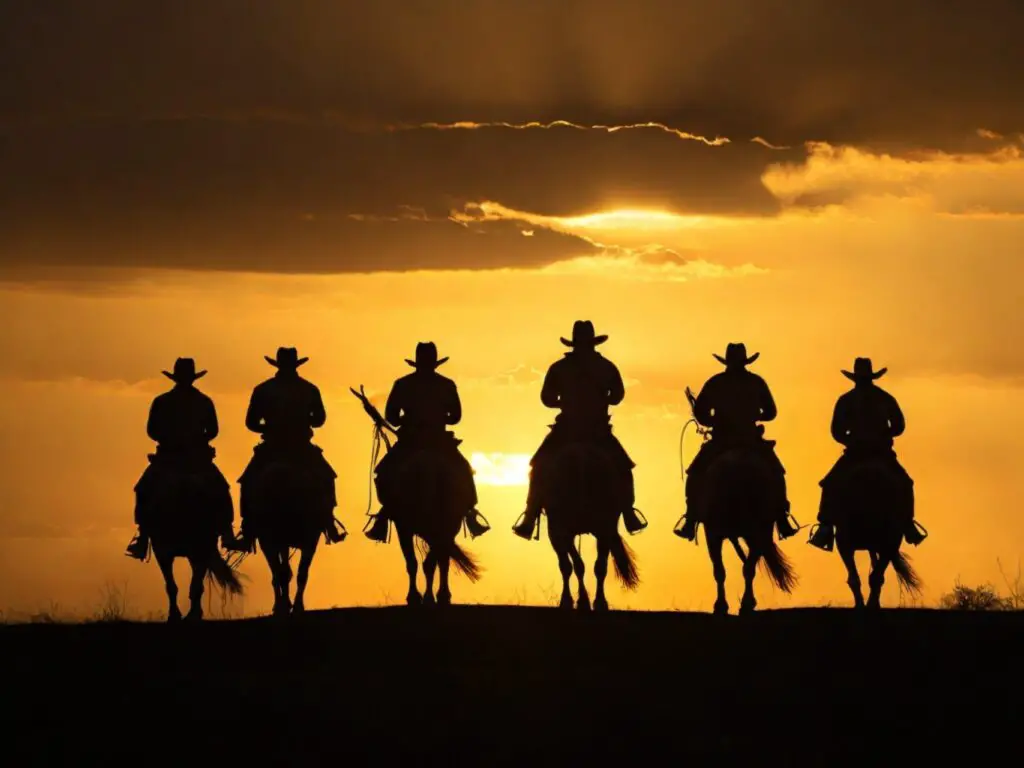
In the Wild West, there was no bottled water, and cowboys often drank straight from rivers, creeks, and ponds—no filters, no purification tablets, just raw, untreated water, Physics Forums explains. If the water was dirty, they might let it settle in a cup before drinking, but that did little to remove bacteria. Cholera, dysentery, and other waterborne diseases were constant threats, but when you’re miles from civilization, you drink what you can. Today, the thought of drinking straight from a creek without treating the water first would horrify most people.
Now, even hikers in the backcountry carry portable filters or purification tablets to ensure their drinking water is safe. Many of the water sources cowboys relied on would be considered unsafe today due to pollution and bacteria. But back then, cowboys didn’t have much choice—dehydration could kill you faster than bad water. Still, it’s amazing they survived as long as they did, given what they were drinking.
Carrying Loaded Guns Everywhere
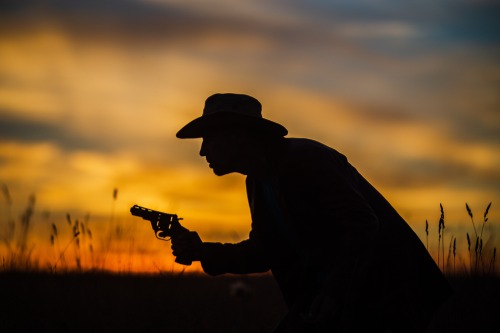
A cowboy wasn’t fully dressed without his gun, and it was almost always loaded and ready to fire, according to Free Range American. Whether it was for protecting the herd from rustlers, scaring off predators, or settling disputes, firearms were an everyday necessity. Many carried their pistols into saloons, churches, and even courtrooms, with little thought about safety. Today, even in states with open carry laws, walking around with a loaded revolver at your hip would turn heads.
Gun safety wasn’t exactly a priority, either—accidental discharges were common, and many cowboys shot themselves in the leg or foot. Arguments that might end in an exchange of words today often ended in a hail of bullets back then. The famous Wild West gunfights weren’t just movie dramatizations; duels and shootouts happened often, sometimes over minor disputes. In modern times, strict gun laws and safety measures make this kind of behavior almost unimaginable.
Taking Baths Once a Month (or Less)
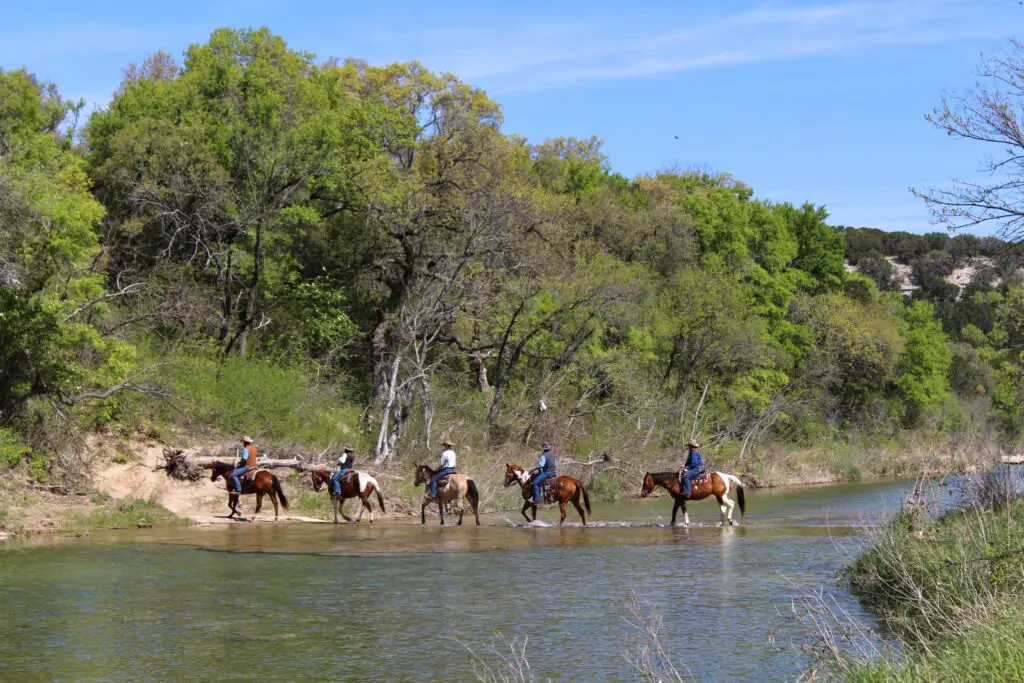
Personal hygiene wasn’t a high priority for cowboys, and bathing was an infrequent luxury, according to True West Magazine. They often went weeks, sometimes even months, without a proper bath, relying instead on a quick rinse in a river—if they found one. Soap was scarce on the trail, and cowboys were usually too busy or tired to care much about cleanliness. Today, the idea of going a month without a shower would make most people cringe.
The combination of sweat, dirt, and manure made cowboys some of the smelliest workers around. Their clothes, rarely washed, were just as bad, stiff with dust and grime from weeks of wear. When they did bathe, it was usually in a shared tub at a saloon or hotel, often in the same dirty water as the last few guys. With modern showers, deodorants, and laundry machines, it’s safe to say we live in far cleaner times.
Performing Amateur Surgery on Themselves

Doctors were few and far between on the frontier, so cowboys often had to treat their own injuries. This meant pulling bullets from wounds with a knife, cauterizing cuts with a hot iron, or even setting their own broken bones. With no anesthesia beyond whiskey or biting down on a belt, the pain must have been unbearable. Today, even the idea of stitching up your own wound without proper medical tools is horrifying.
Infections were common, and many injuries that are treatable today were death sentences back then. A simple cut could turn into gangrene, leading to amputation—often done with no more than a saw and a shot of liquor. Cowboys also treated snake bites by cutting into the wound and trying to suck out the venom, a method we now know doesn’t work. Thankfully, modern medicine has made these brutal practices unnecessary.
Eating Spoiled Food Without Question
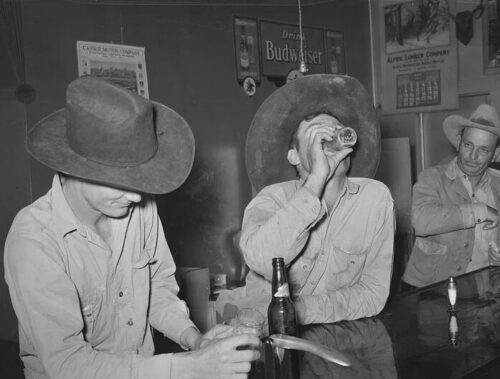
Refrigeration was nonexistent in the Wild West, and cowboys ate whatever they could, even if it was spoiled. Their diet consisted mostly of beans, dried meat, and hardtack, but when fresh food was available, it often went bad quickly, according to History Hit. They might scrape off mold, cut away rotting parts, or just eat it anyway because there were no other options. Today, food safety regulations and refrigeration make eating spoiled food unnecessary—and dangerous.
Canned goods were a prized possession, but early canning methods sometimes led to deadly botulism poisoning. Meat, often salted or smoked, still spoiled quickly in the hot sun, and there was no way to check if it was truly safe. Cowboys didn’t have expiration dates or health inspectors, just their senses and a strong stomach. Considering how careful we are about food safety now, it’s amazing they survived as long as they did.
Settling Fights with Fists or Guns

Cowboys had a rough-and-tumble culture where disagreements were often settled with violence. A heated argument could quickly turn into a brutal fistfight, or worse, a shootout. There were no HR departments or legal consequences—if you had a problem with someone, you handled it yourself. Today, fighting in the workplace would get you fired, and duels have been outlawed for well over a century.
Bar brawls were a common sight in frontier towns, with chairs flying and bottles smashing over heads. If someone insulted your honor, you might challenge them to a gunfight at high noon. It was a dangerous way to resolve conflicts, and many men died over small disputes. Now, we rely on law enforcement, lawsuits, and social norms to handle disagreements—much safer than bullets and fists.
Using Tobacco for Everything—Even Medicine
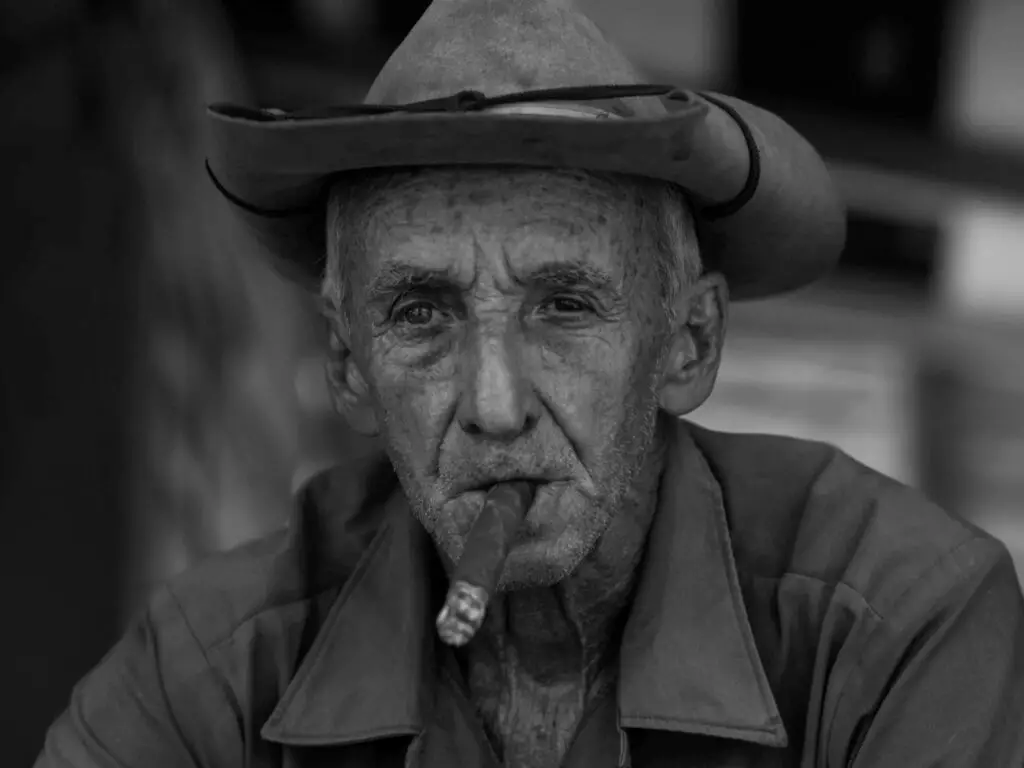
Smoking, chewing, and spitting tobacco were everyday habits for cowboys, but they also used it in ways that would seem bizarre today. If a cowboy had a toothache, he might pack some tobacco into the cavity to numb the pain. It was also rubbed on insect bites, wounds, and even snake bites as a folk remedy. Today, we know tobacco is more likely to cause health problems than cure them, and doctors definitely don’t recommend rubbing it on your skin.
Spitting tobacco juice was so common that saloons and general stores often had designated spittoons—though plenty of cowboys just spat on the floor. This created an unsanitary mess, and floors were covered in a mix of spit, dust, and manure. The smell must have been awful, but back then, hygiene wasn’t a big concern. Nowadays, public spitting is frowned upon, and the dangers of tobacco use are well-documented.
Riding for Hours Without a Saddle or Proper Gear
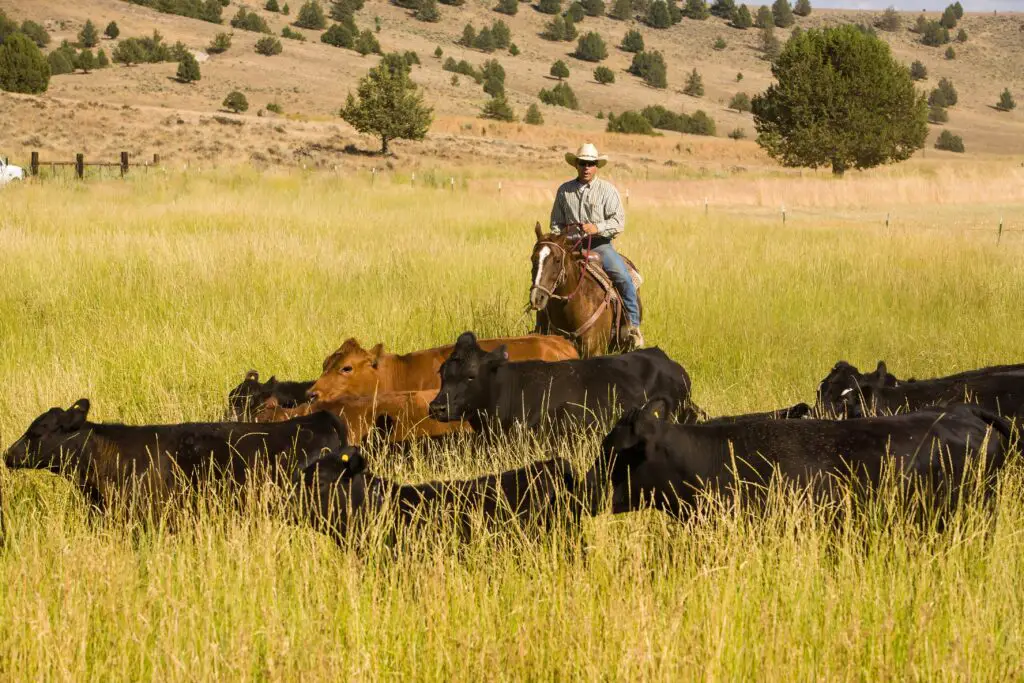
While saddles were common, not every cowboy had one, and sometimes they had to ride bareback for hours at a time. This was extremely uncomfortable and tough on both the cowboy and the horse, but it was sometimes necessary when saddles broke or weren’t available. Modern riders use high-quality saddles designed for comfort and safety, but cowboys often had to make do with whatever they had. Riding long distances without proper gear today would be unthinkable, not to mention painful.
Without modern riding equipment like padded saddles and ergonomic stirrups, cowboy life was brutal on the body. Many developed chronic back pain, knee problems, and sores from spending hours on horseback. Some even rode barefoot, as boots were expensive and sometimes wore out before they could afford new ones. Today, horseback riding is mostly recreational, with an emphasis on safety and comfort—something the cowboys of old never had.
Gambling Away Their Wages in One Night
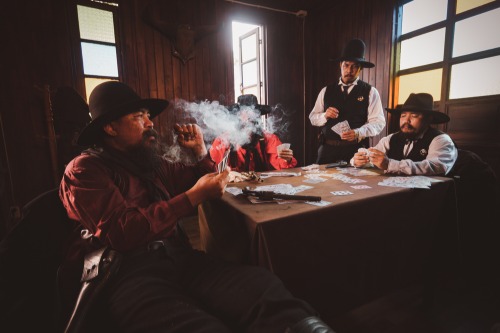
After weeks or months on the trail, cowboys often spent their hard-earned money in a single night of drinking and gambling. Saloons were packed with poker tables, dice games, and high-stakes bets, and it wasn’t uncommon for a cowboy to leave with empty pockets—or worse, in debt. Today, financial responsibility is drilled into most people, and losing an entire paycheck on a game of cards would be seen as reckless. But in the Wild West, the thrill of gambling was part of the culture, and many cowboys couldn’t resist.
Some games were rigged, and professional gamblers often took advantage of naive ranch hands looking for excitement. Fights frequently broke out over cheating accusations, sometimes leading to deadly shootouts. Unlike today’s regulated casinos, there were no rules, and a cowboy’s luck could change in an instant. Now, we have financial advisors, online banking, and retirement plans—none of which would have made sense to a cowboy living paycheck to paycheck.
Branding Cattle (and Sometimes People)
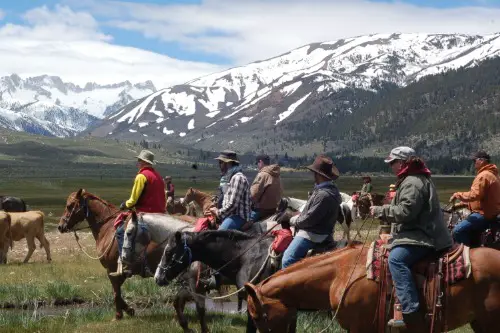
Cattle branding was essential for proving ownership, and every ranch had its own unique mark. Cowboys would heat an iron until it was red-hot and press it against a cow’s hide, permanently scarring the animal. This was painful for the cattle, but it was considered a necessary practice to prevent theft. Today, while branding still exists, many ranchers have moved toward ear tags or electronic tracking to reduce animal suffering.
But branding didn’t always stop with cattle—some cowboys took it a step further. In a few extreme cases, outlaws were marked with brands as a form of punishment, and some men even branded themselves as a sign of loyalty to their ranch. The idea of branding a human being is horrifying by modern standards, but back then, it was seen as just another way to prove allegiance. These days, tattoos and ID cards have replaced the need for such brutal markings.
Letting Kids Work as Cowboys
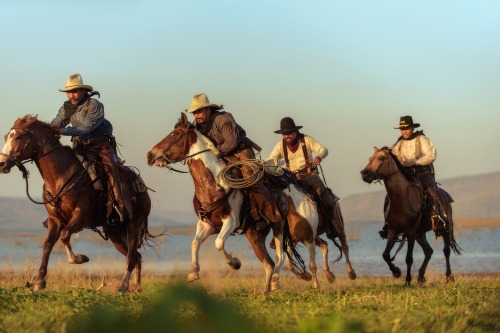
Many cowboys started their careers as young as 10 or 12, doing dangerous jobs that would never be allowed today. These kids worked long hours in brutal conditions, herding cattle, breaking horses, and even participating in gunfights if trouble arose. There were no child labor laws in the Wild West, and if you were old enough to ride a horse, you were old enough to work. Today, the idea of sending a 12-year-old out on a dangerous cattle drive would be unthinkable.
These young cowboys were tough, but they often suffered serious injuries, exhaustion, and even death. They didn’t go to school, and their futures were uncertain—if they survived, they might own a ranch one day, but many didn’t live that long. The modern world has strict labor laws, mandatory schooling, and protections for kids, ensuring they don’t have to risk their lives just to earn a living. Compared to the past, childhood today is a luxury that cowboy kids could never have imagined.


